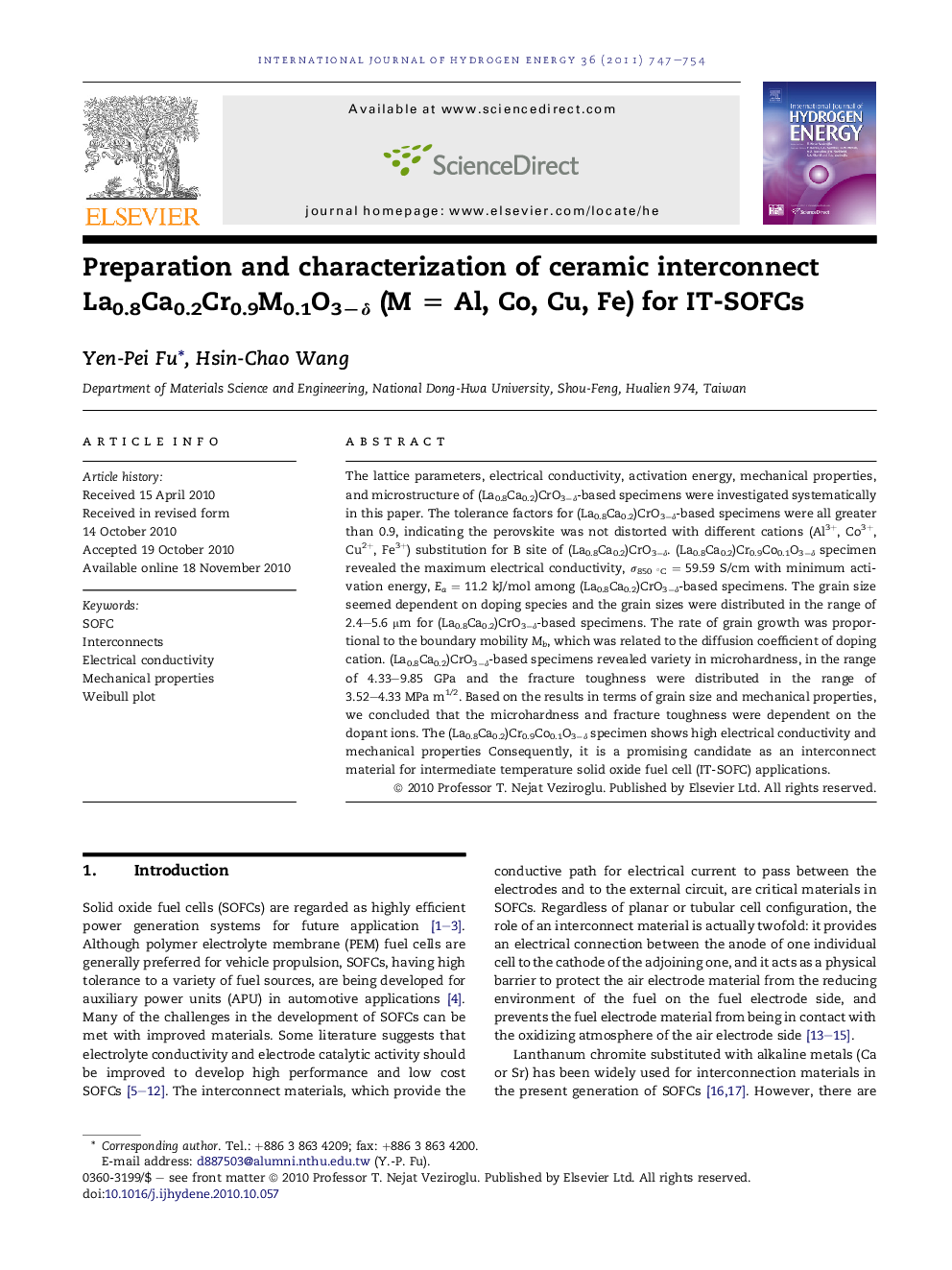| Article ID | Journal | Published Year | Pages | File Type |
|---|---|---|---|---|
| 1277830 | International Journal of Hydrogen Energy | 2011 | 8 Pages |
The lattice parameters, electrical conductivity, activation energy, mechanical properties, and microstructure of (La0.8Ca0.2)CrO3−δ-based specimens were investigated systematically in this paper. The tolerance factors for (La0.8Ca0.2)CrO3−δ-based specimens were all greater than 0.9, indicating the perovskite was not distorted with different cations (Al3+, Co3+, Cu2+, Fe3+) substitution for B site of (La0.8Ca0.2)CrO3−δ. (La0.8Ca0.2)Cr0.9Co0.1O3−δ specimen revealed the maximum electrical conductivity, σ850 °C = 59.59 S/cm with minimum activation energy, Ea = 11.2 kJ/mol among (La0.8Ca0.2)CrO3−δ-based specimens. The grain size seemed dependent on doping species and the grain sizes were distributed in the range of 2.4–5.6 μm for (La0.8Ca0.2)CrO3−δ-based specimens. The rate of grain growth was proportional to the boundary mobility Mb, which was related to the diffusion coefficient of doping cation. (La0.8Ca0.2)CrO3−δ-based specimens revealed variety in microhardness, in the range of 4.33–9.85 GPa and the fracture toughness were distributed in the range of 3.52–4.33 MPa m1/2. Based on the results in terms of grain size and mechanical properties, we concluded that the microhardness and fracture toughness were dependent on the dopant ions. The (La0.8Ca0.2)Cr0.9Co0.1O3−δ specimen shows high electrical conductivity and mechanical properties Consequently, it is a promising candidate as an interconnect material for intermediate temperature solid oxide fuel cell (IT-SOFC) applications.
